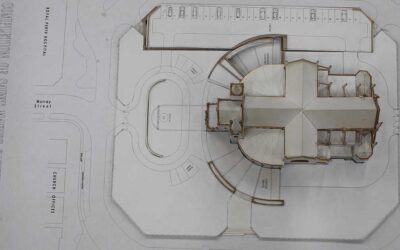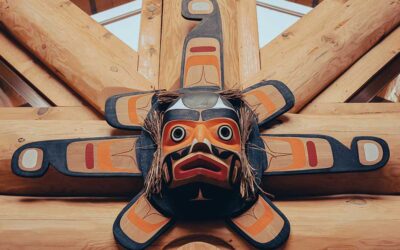Preserving Organizational History

Margot Note
Every organization has a history; ideally, institutions should organize and preserve their records for the future. Written records are often the only source of information about an institution’s early intentions and activities, and these documents provide institutional knowledge about the organization’s establishment, by whom, and what programs and activities it created.
Organized, accessible records provide information for decision-making. In addition, the documentation offers an institutional memory to resolve legal disputes; facilitates accountability to clients, parent organizations, or regulatory bodies; saves time, effort, and money; assists in planning for anniversaries or special events; instills pride in the past; and inspires hope for the future. Archival records can also recognize long-term employees and measure the organization’s growth and development.
Identifying Records of Enduring Value
Whether the organization has a formal archives program or not, knowing which records have enduring value helps the future of the archives. Keeping an organization’s documents consists of sorting and organizing, eliminating duplicates and temporary or non-essential records, and creating policies and procedures to preserve records.
Records of lasting value may include:
- Charters, constitutions, and bylaws with amendments and revisions
- Meeting minutes, agendas, and supporting documents
- Procedures manuals and handbooks
- Organizational histories
- Interviews with founding members, past presidents, and board members
- Biographies of past and present executives
- Board files
- Rosters of trustees, officers, and committee chairs
- Program files
- General ledgers, journals, budgets, and financial records
- Contracts, insurance policies, and legal documents
- Deeds, surveys, architectural drawings, and building and property records
- Important correspondence
- Program files
- Reports
- Photographs
- Audiovisual materials
- Clippings, press releases, or articles
- Artifacts such as event materials
- Awards, memorials, and citations
- Publications such as bulletins, brochures, and newsletters (For publications with many copies, keeping three copies each is sufficient).
Organizations need to retain certain records beyond their current use needs according to regulatory, legal, financial, and operational requirements, as well as federal and state laws. There are several choices an organization can make to preserve its records. For example, it can create and maintain its archives and donate records to an existing archival repository or the archives of a parent organization.
An organization should assign someone the responsibility to systematically maintain its current records and preserve those with historical significance. An organization may include a statement about the importance of maintaining historical records in its constitution or bylaws. The responsibilities usually fall to the organization’s archivist. These responsibilities include:
- developing record-keeping policies and procedures
- selecting the appropriate storage space for the records
- sorting and organizing the records
- describing records
- requesting permanent copies of frequently updated records
- following records management guidelines
Sometimes these record-keeping duties fall to interns, junior employees, or other non-professionals. Unfortunately, using unskilled but well-meaning archival labor can cause problems in the long term. Therefore, organizations should always invest in archivists.
Why Preserve?
The preservation of an organization’s records should not be done only for the convenience of historians, even though this purpose most relates to benefiting the larger community. Instead, the preservation of the materials is essential for each organization. In addition, preserved resources allow users interested in an organization to trace its history.
History gives people a sense of identity, defining who they are and where they have been. An essential part of their identity is the organizations in which they interact. Institutions and their organizational history are a product of past experiences, which become the basis for shared memory.
Records are the material expression of an organization’s interests; within the context of those interests, an original record impartially chronicles an event. While people may interpret records differently, the information contained in the records remains constant. Preserving primary sources allows for an accurate historical legacy.

Margot Note
Margot Note, archivist, consultant, and Lucidea Press author is a regular blogger, and popular webinar presenter for Lucidea, provider of ArchivEra, archival collections management software for today’s challenges and tomorrow’s opportunities. Read more of Margot’s posts here.
Never miss another post. Subscribe today!
Similar Posts
Cultivating a Community of Archival Practice: A Client’s Success Story
“We need a dynamic system that supports a consistent approach to managing the Perth diocesan collections across Western Australia…ArchivEra is already providing this with Catholic dioceses in Bendigo, Hobart, and Ballarat.”
Honoring Cultural Protocols in Archival Practice
Learn how archives can honor Indigenous cultural protocols, reframe stewardship, and move toward ethical, reciprocal, and community-driven practices.
Centering Sovereignty in Archives: Decolonial Approaches to Indigenous Knowledge
Margot Note explores how centering sovereignty in archives supports Indigenous rights, decolonial practice, justice, and cultural resurgence.
The Ethical Use of Born-Digital Materials in Archives
Born-digital records introduce complex ethical dilemmas involving consent, privacy, preservation, and access. Archivists must rethink ethical frameworks to navigate digital records’ dynamic, fragmented, and often personal nature.




Leave a Comment
Comments are reviewed and must adhere to our comments policy.
0 Comments